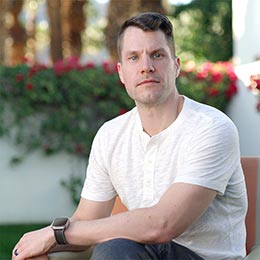Why Traffic Signs Don't Work (And What You Should Learn From It)
Yesterday, I learned an odd fact. Traffic signs have very little effect on driver behavior. According to the book "Traffic: Why We Drive the Way We Do (and What It Says About Us)", streets and cities that have taken the drastic step of removing all traffic signs, often see a reduction in crashes.
People drive more carefully when a road feels more dangerous. They automatically respond to the natural visual cues in their surroundings and adjust their behavior accordingly. They ask themselves, is this they type of road I can drive fast on, or is this the type of road where I have to drive carefully?
This is the reason narrow streets with trees crowded along the edges are often safer than wide streets with large clearing zones on each side. Common sense would say, less trees means fewer potential things to collide with. But, the reality is: the scary trees lining the side of the road act as a crash deterrent. The trees are far more effective than a "35 mph Speed Limit" sign. Traffic signs are nothing but artificial cues that try to compensate for a road environment that doesn't effectively tell people how to behave.
Interactive designers can learn from this lesson. Human behavior often ignores artificial cues. Just telling someone to "Click Here," isn't enough to spur them to action. Most of the time these artificial cues are ignored entirely (just like the signs that say "Slow Down: Children Playing"). Instead, websites should be designed with natural cues.
A well integrated call-to-action, engaging motion graphics, or a startling design element can provide natural clues to what a user should do next. They're built it into the environment, not patched on top of it, and that's the way they should be.
Users ignore most banner ads because they feel like banner ads. They're ugly, distracting and feel artificial. They're unrelated to the website experience at hand. The mind blocks them out and instead responds to other items on the page. If interactive designers really want to get people's attention, they need to create natural cues, not artificial ones.

Comments
Add A CommentHey John,
I was referring to the dutch town of Drachten.
Just as a note, I generally don't included detailed citations in my blog posts. I first learned about the town from the book Traffic (mentioned in the first paragraph).
For more information on Drachten, visit the below:
http://www.wilsoncenter.org/index.cfm?fuseaction=wq.essay&essay_id=462572
http://www.telegraph.co.uk/news/uknews/1533248/Is-this-the-end-of-the-road-for-traffic-lights.html
http://www.examiner.com/x-536-Civil-Liberties-Examiner~y2009m9d18-At-least-with-traffic-fewer-rules-make-for-better-behavior?cid=examiner-email
http://www.cicle.org/cicle_content/pivot/entry.php?id=1154
Hey John,
I was referring to the dutch town of Drachten.
Just as a note, I generally don't included detailed citations in my blog posts. I first learned about the town from the book Traffic (mentioned in the first paragraph).
For more information on Drachten, visit the below:
http://www.wilsoncenter.org/index.cfm?fuseaction=wq.essay&essay_id=462572
http://www.telegraph.co.uk/news/uknews/1533248/Is-this-the-end-of-the-road-for-traffic-lights.html
http://www.examiner.com/x-536-Civil-Liberties-Examiner~y2009m9d18-At-least-with-traffic-fewer-rules-make-for-better-behavior?cid=examiner-email
http://www.cicle.org/cicle_content/pivot/entry.php?id=1154
"Cities that have taken the drastic step of removing all traffic signs, often see a reduction in crashes" is extremely vague. And you have not cited it.